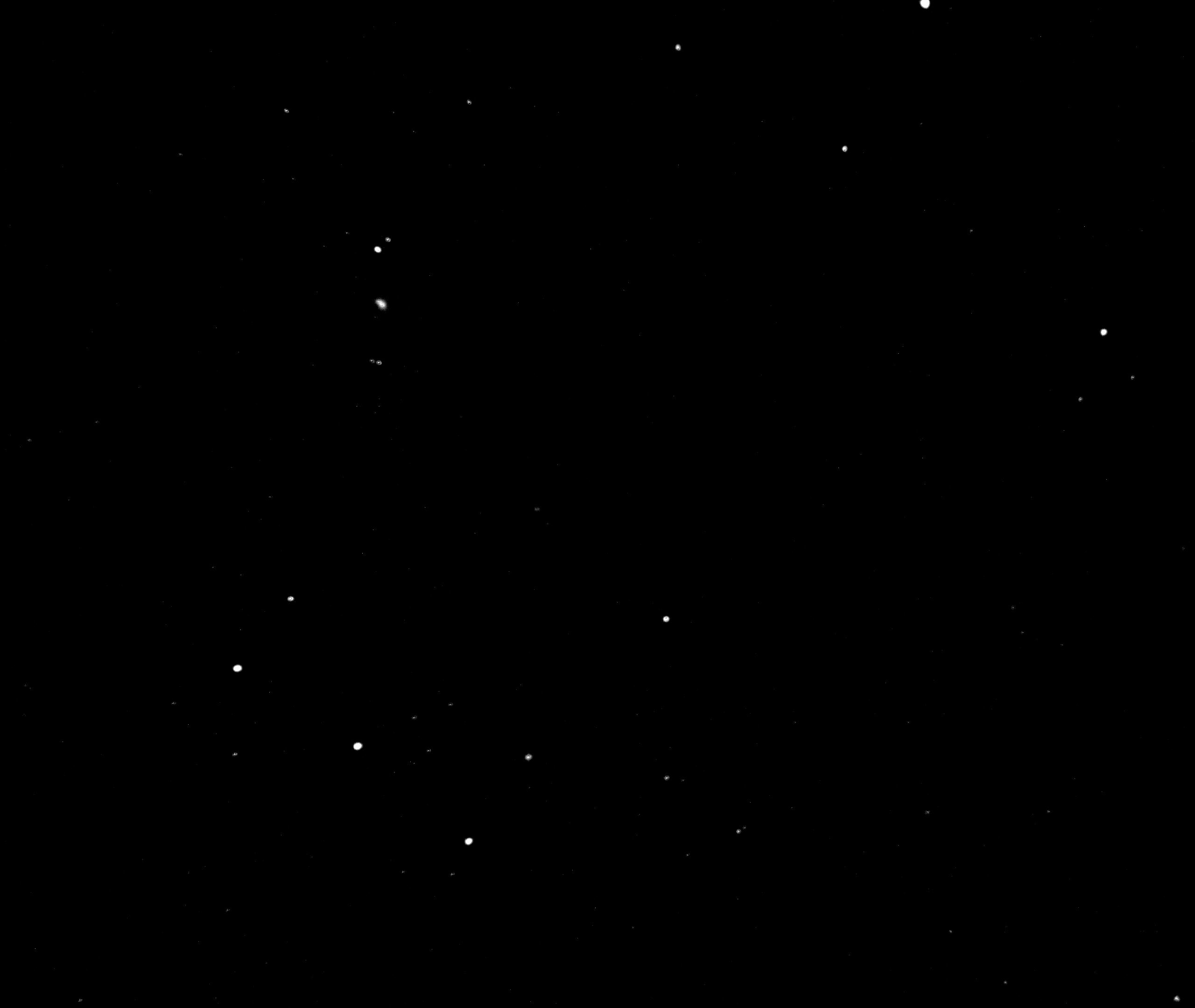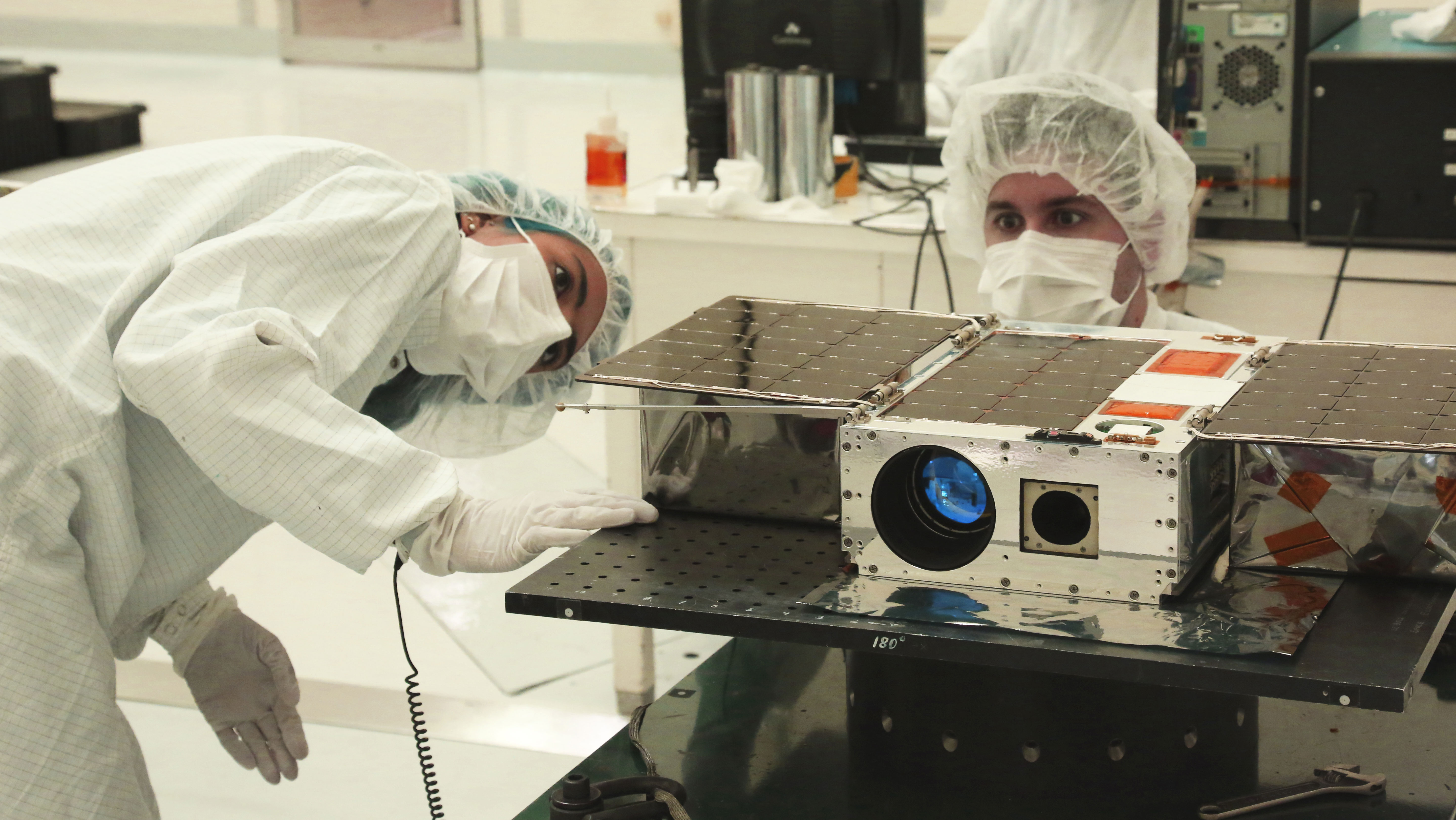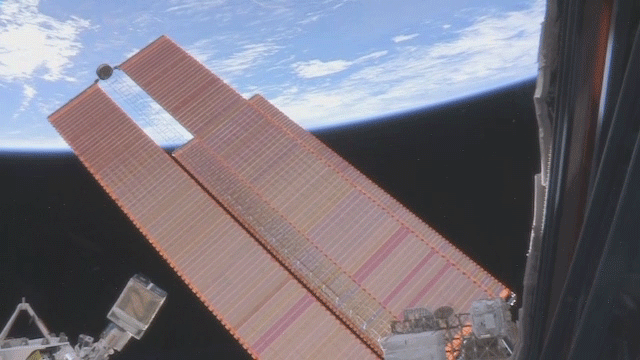How the tiny exoplanet-hunting ASTERIA satellite showed scientists what cubesats can do

HONOLULU — A tiny satellite studying alien worlds may be gone for good, but during the two years the spacecraft operated, it laid the foundation for what may become a new way of finding exoplanets.
The Arcsecond Space Telescope Enabling Research in Astrophysics satellite (ASTERIA) fell silent in December 2019, NASA announced Jan. 3. Although NASA has said that it will continue trying to contact the spacecraft until March, scientists on the project looked back on ASTERIA's legacy at the 235th American Astronomical Society conference, held here last week. The satellite, which launched in 2017, was designed to determine whether small cubesats could manage the sort of technically precise measurements required by scientists looking for distant planets.
"ASTERIA's special because it set out to prove that cubesats could be more than toys, that they could do cutting-edge astrophysics," Mary Knapp, project scientist for ASTERIA at the Massachusetts Institute of Technology (MIT), told Space.com.
Related: The Biggest Alien Planet Discoveries of 2019
That was a far cry from how the science community viewed cubesats when the team began developing ASTERIA. "When we were getting started, cubesats were kind of a new thing, but they were considered educational," Knapp said. "They were for engineering students to learn what's in a spacecraft and take a shot at putting one together, without any expectation that they would actually work."
But the team behind ASTERIA thought cubesats had more potential than that. In 2008, Sara Seager, an astronomer at MIT, envisioned a fleet of cubesats each dedicated to monitoring a single star for exoplanets; that concept eventually became the ASTERIA satellite, and Seager remains the advisory principal investigator.
In order to turn her vision into a spacecraft, the engineers involved in ASTERIA needed to develop better technology for steadily pointing small satellites and maintaining stable temperature conditions. A particularly important improvement was a two-step navigation system that used specific "guide stars" as sightings to latch onto when studying specific stars.
Get the Space.com Newsletter
Breaking space news, the latest updates on rocket launches, skywatching events and more!

Eventually, in 2017, ASTERIA launched as a technology-demonstration mission, intended to determine whether those improvements were effective.
That goal meant that ASTERIA's prime target was a well-studied star called 55 Cancri, which is located about 40 light-years away from Earth. In particular, the cubesat looked for occasions when the star dimmed as some of its light was blocked by orbits of the already-discovered planet 55 Cancri e. Scientists believe that this planet, about twice the size of Earth, is covered in lava.
"It was hard. It had only been done from space with larger telescopes," Knapp said. But the scientists had set themselves a difficult task on purpose. "It would serve as a proof of concept that we could make these challenging measurements."
And ASTERIA succeeded in those measurements. During its two years in orbit, it observed not just 55 Cancri, but also well-known stars like Alpha Centauri, Polaris and Algol, along with noted planet-haver HD 219134, which scientists believe boasts four orbiting worlds. The team also used ASTERIA to study some objects within our solar system, although the scientists are still analyzing those results.
that NASA consider developing a fleet of upgraded spacecraft. Each cubesat could then be matched to a specific bright star to look for Earth-size planets with orbits of about a year, like our own.
If that happens, the new satellites wouldn't be precise duplicates of ASTERIA, Vanessa Bailey, principal investigator for extended mission science at NASA's Jet Propulsion Laboratory in California, told Space.com. In particular, she said, the cubesat bodies are spacious enough to allow for larger-aperture instruments.
And since ASTERIA launched, other missions have also pushed the boundaries of what cubesats can do. One big step came in 2018, when the twin Mars Cube One (MarCO) satellites, which launched with NASA's InSight lander, watched that spacecraft touch down on the Red Planet. They were the first cubesats to leave Earth orbit.

For exoplanet research, that example may prove inspiring, Knapp said. ASTERIA was locked in an orbit like that of the space station, about 250 miles (400 kilometers) above Earth. But in that orbit, the cubesat regularly lost sight of some of the stars it was trying to study. A future satellite in a higher orbit could avoid that problem.
Even if future ASTERIA satellites never come to be, the mission has taught scientists and engineers that cubesats can serve a vital role in both supplementing and developing larger missions.
"ASTERIA has done a very nice job of demonstrating creative ways that you can use existing platforms to test new technologies that were beyond the original scope of the mission," Bailey said. Some of those developments touch on a spacecraft's ability to make decisions and determine its location on its own and to recognize when something may have gone wrong.
"These small platforms can exceed your initial expectations," Bailey said, "if you let them."
- 7 Ways to Discover Alien Planets
- Photographing an Exoplanet: How Hard Can It Be?
- The Strangest Alien Planets in Pictures
Email Meghan Bartels at mbartels@space.com or follow her @meghanbartels. Follow us on Twitter @Spacedotcom and on Facebook.

Join our Space Forums to keep talking space on the latest missions, night sky and more! And if you have a news tip, correction or comment, let us know at: community@space.com.

Meghan is a senior writer at Space.com and has more than five years' experience as a science journalist based in New York City. She joined Space.com in July 2018, with previous writing published in outlets including Newsweek and Audubon. Meghan earned an MA in science journalism from New York University and a BA in classics from Georgetown University, and in her free time she enjoys reading and visiting museums. Follow her on Twitter at @meghanbartels.









